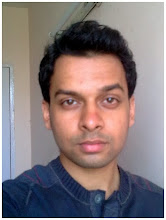A true duopoly is a specific type of oligopoly where only two producers exist in one market. In reality, this definition is generally used where only two firms have dominant control over a market. In the field of industrial organization, it is the most commonly studied form of oligopoly due to its simplicity.
The Cournot model, shows that two firms assume each others output and treat this as a fixed amount, and produce in their own firm according to this.
It has the following features:
The Cournot model, shows that two firms assume each others output and treat this as a fixed amount, and produce in their own firm according to this.
It has the following features:
- There is more than one firm and all firms produce a homogeneous product, i.e. there is no product differentiation;
- Firms do not cooperate, i.e. there is no collusion;
- Firms have market power, i.e. each firm's output decision affects the good's price;
- The number of firms is fixed;
- Firms compete in quantities, and choose quantities simultaneously;
- The firms are economically rational and act strategically, usually seeking to maximize profit given their competitors' decisions.

Comments
Post a Comment